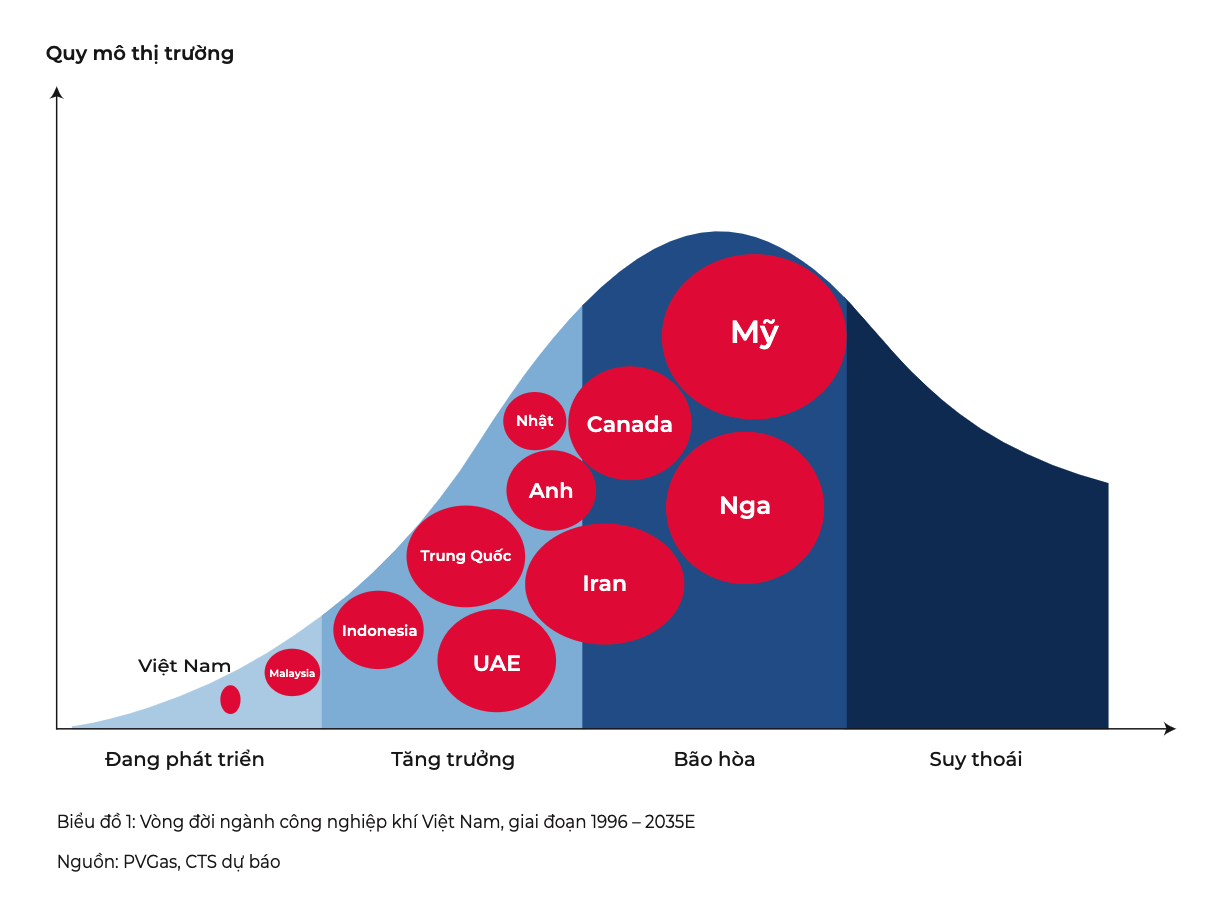Liquefied natural gas is considered the main energy source that accelerates the transition from fossil fuels to eco-friendly energy. To ensure the energy supply for sustainable development goals, Vietnam is gradually preparing to construct infrastructure to pioneer the import of LNG fuel. Vietnam also formulates LNG deployment plans in multiple fields, especially in producing electrified LNG fields. Below, we provide an overview of Vietnam's LNG industry in recent years..
1. Basic information about LNG.
Liquefied natural gas (LNG) is natural gas that has been cooled to a liquid state (liquefied), to about -162oC. Therefore, it is convenient for storage and transportation. LNG is odorless, colorless, non-toxic, and non-corrosive. LNG is considered the cleanest fossil fuel source because the consumption process creates fewer harmful emissions and does not produce soot and dust that pollute the environment.

2. The overview of LNG market in Vietnam.
The gas industry in Vietnam is currently at a developing stage compared to the gas industry around the world. The demand for natural gas consumption in Vietnam is lower than the consumption in ASEAN and worldwide, but it tends to increase steadily. According to BMI research, natural gas reserves in Vietnam rank 3rd in ASEAN (after Indonesia and Malaysia), with an average annual production of about 10.6 billion m3 of gas. The report on Vietnam's gas industry predicts that at the current extraction rate, the total gas reserves will be enough to exploit in the next 18 – 20 years, starting in 2020. However, importing LNG is a key solution for accommodating strong electrification development in the future, high demand due to the plant's transportation from other countries to Vietnam, and the decline of the gas field.

In Vietnam, LNG is mainly used as a fuel for power plants and industrial consumption. Specifically, the power projects and LNG depots make the market more bustling than ever. Furthermore, the quantity of imported LNG will predominantly be directed towards electricity generation, with the aim of reducing emissions that harm the environment. This strategic approach also ensures a stable energy supply, particularly in light of diminishing coal and hydroelectric resources due to factors such as drought and overexploitation, which pose threats to future power generation productivity.
Read more: What are the differences between CNG, LNG and LPG?
3. Opportunities and challenges for the liquefied natural gas industry - LNG Vietnam in the coming years
LNG importation is considered an essential solution to ensure national energy security, stimulate economic growth associated with environmental preservation, and move towards a clean energy future. Vietnam is on the way to implementing LNG depots and distribution projects for importing LNG. More than 20 LNG power plants were approved for construction plans and implementation progress. Until now, the LNG projects have been nearly completed. Furthermore, the LNG Thi Vai depot, which belongs to PV Gas, is going to operate in 2023.
By understanding the importance of energy development associated with environmental preservation and the reduction of fuel supply in the future, Vietnam is in a rush to prepare for importing LNG from foreign countries that ensures enough LNG for domestic demand. In the upcoming time, besides developing infrastructure for LNG import, Vietnam will continue to complete LNG power projects in order to contribute to socio-economic development and also comply with the country's commitment to the emission reduction target. Gas South is in the process of finishing the infrastructure and pioneering the import and distribution of LNG to domestic consumers.





